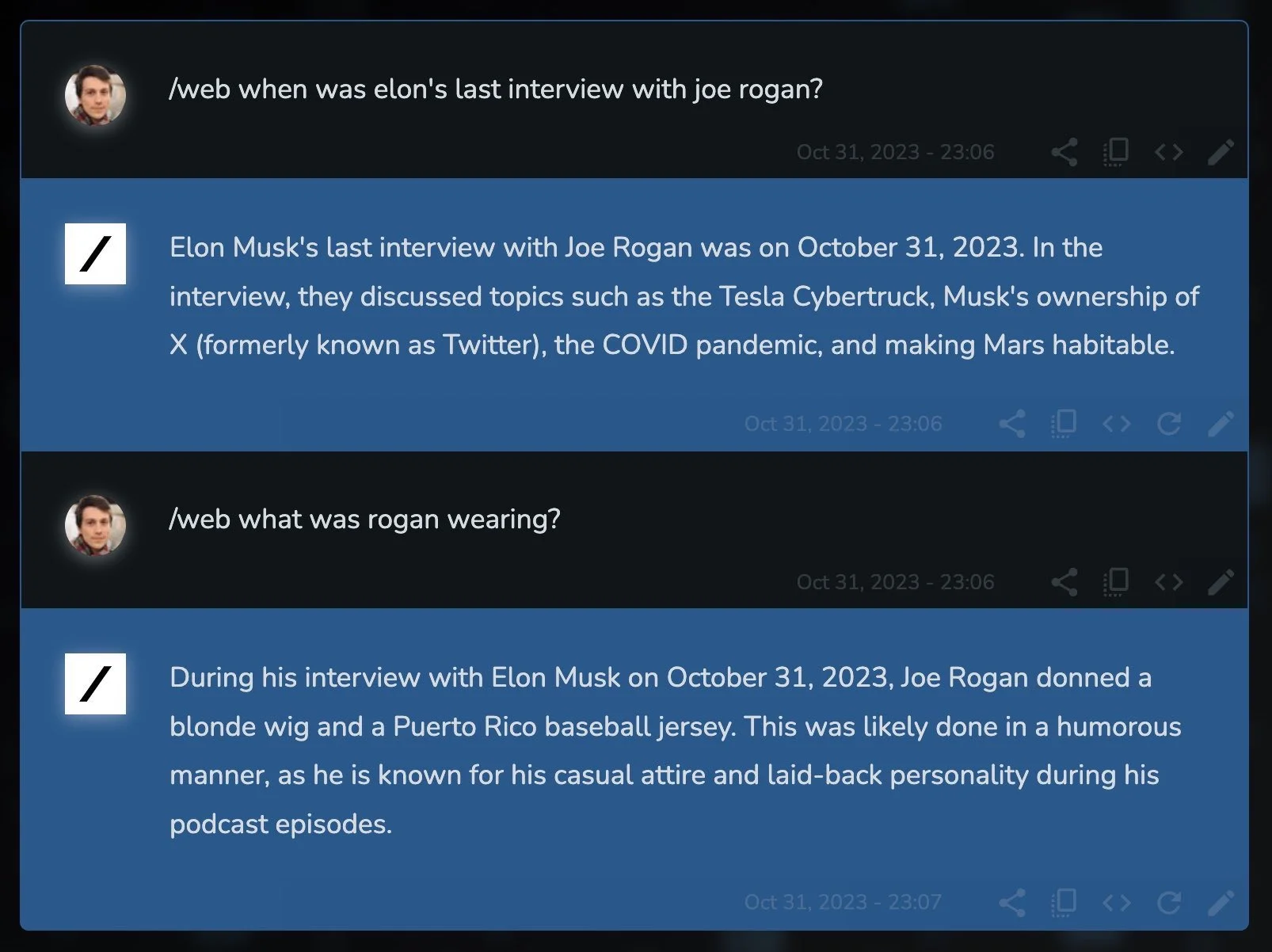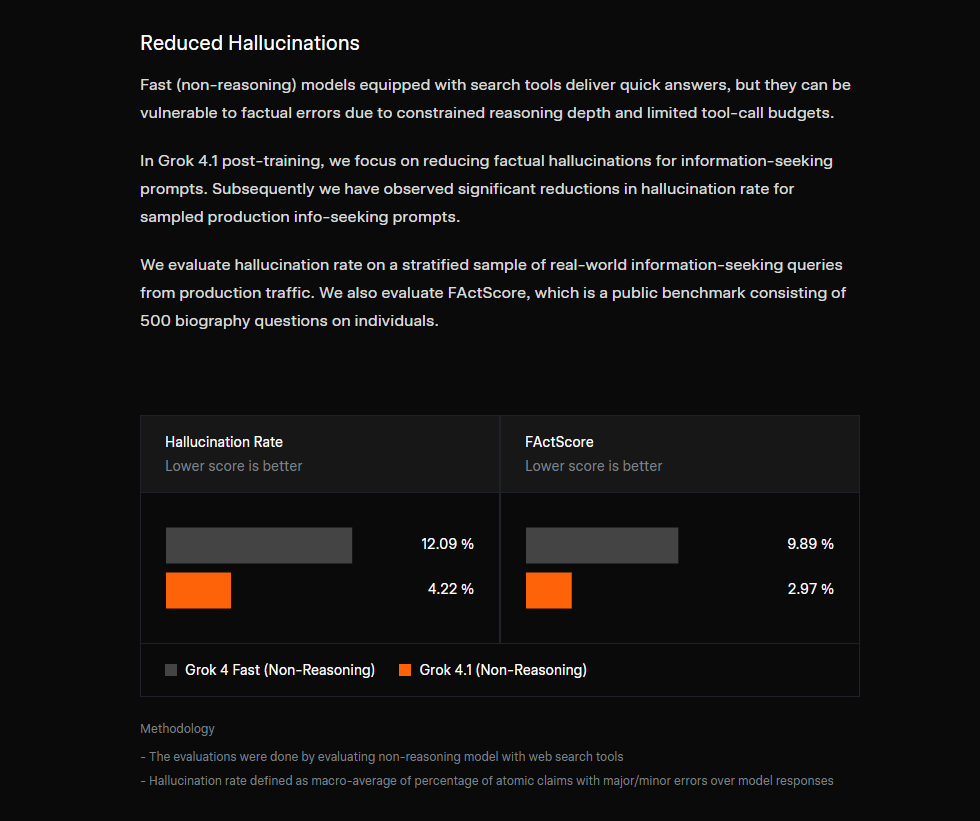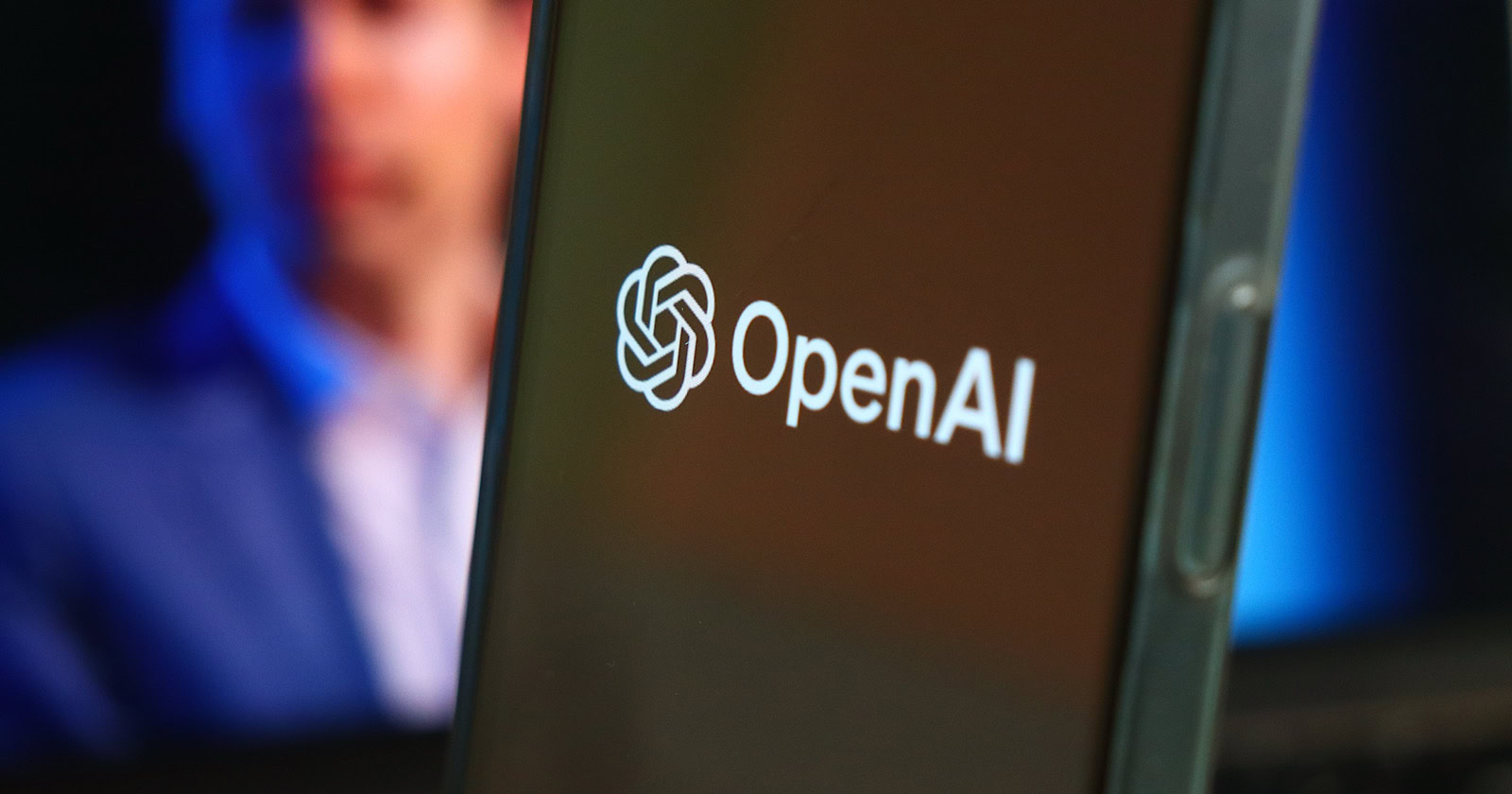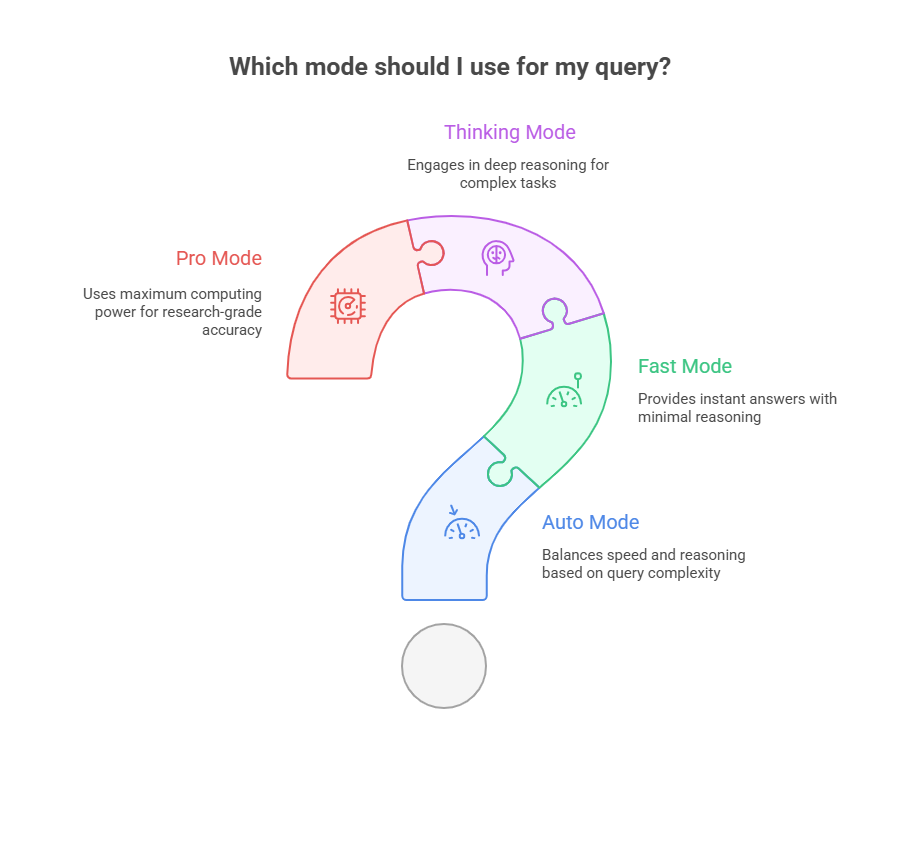by Cool (Evert)
We’ve entered a new chapter in large-language-model (LLM) evolution. Two recent releases stand out: Grok 4.1 (from xAI) and GPT‑5.1 (from OpenAI, powering ChatGPT). As an AI-consultant (like you, Evert), it’s useful to compare them — what they bring, where they shine, and how that affects real-world workflows (data/AI consulting, prototypes, creative tasks).
Here’s a breakdown of the two models, followed by implications for you and your projects.
What we know: model highlights
Grok 4.1




Key points:
- xAI announced Grok 4.1 as a “focused upgrade” to Grok 4, emphasising emotional intelligence, creativity, collaboration and reduced hallucinations. (CometAPI)
- According to sources: “exceptionally capable in creative, emotional, and collaborative interactions … more perceptive to nuanced intent, compelling to speak with” (xAI). (xAI)
- It is reportedly available for all users via grok.com, the X (formerly Twitter) app and mobile apps. (TestingCatalog)
- Some community threads suggest impressive leaps in benchmark scores (e.g., “jump is huge” vs Grok 4) but also mention “issues, at least for code”. (Reddit)
- The model appears to have two modes (“Thinking / Non-Thinking”) and scoring well on “leaderboard results”. (CometAPI)
In short: Grok 4.1 seems positioned as a user-friendly, creative and conversational model with strong performance — especially around expressiveness and interaction.
ChatGPT (GPT 5.1)





Key points:
- OpenAI’s GPT-5.1 is described as “a smarter, more conversational ChatGPT”. (OpenAI)
- The model arrives in two variants: Instant (fast, conversational) and Thinking (deeper reasoning). (OpenAI)
- A major new feature: customisable tone/personality presets (e.g., Professional, Friendly, Candid, Quirky). (Business Insider)
- The context window (for API usage) is 128,000 tokens — large context capability. (OpenAI Platform)
- The rollout is underway; API access is recommended for most uses. (OpenAI Platform)
- Early community feedback is mixed: some praise, some concerns (e.g., guardrail behaviour). (Reddit)
In short: GPT 5.1 builds upon previous GPT series with greater flexibility (tone/style), depth (reasoning mode) and large-context usage — making it a very strong contender for advanced/production use in consulting, code, reasoning.
Head-to-Head: Strengths & Weaknesses
Here’s a comparative table with emphasis relevant to your consultancy work (data/AI, prototyping, code, creative tasks).
| Feature | Grok 4.1 | GPT 5.1 |
|---|---|---|
| Conversational/expressive ability | Very strong: emphasises emotional intelligence, nuanced intent, “compelling to speak with”. (xAI) | Also strong: major focus on tone/customisation (personality presets). (Business Insider) |
| Instruction-following / reasoning depth | Good—but some anecdotal reports suggest limitations on code or deep technical tasks. (Reddit) | Excellent: with “Thinking” mode designed for deeper planning/logic. (OpenAI) |
| Context window / large input handling | Not explicitly highlighted in public docs yet. | 128k tokens supported (via API). (OpenAI Platform) |
| Speed / deployment / access | Positioned as widely available (free app access) and ready for real-world interaction. (TestingCatalog) | Available via ChatGPT + API; rollout may still be variable. (Tom’s Guide) |
| Creative/collaborative tasks (e.g., brainstorming, design, narrative) | Strong emphasis here: creativity, emotional/context nuance. | Also capable — but may lean more on structured reasoning in “Thinking” mode. |
| Code / data/AI consulting tasks (e.g., algorithm design, debugging, model interpretation) | Possibly less mature comparative to GPT-5.1 (from available commentary). | Likely stronger due to improved reasoning and large context window — good for consulting workflows. |
| Customization (tone/personality) | Good conversational tone but less emphasis on selectable personality presets in public disclosures. | Explicit new feature: personality presets, fine-tone controls. (Business Insider) |
| Maturity / ecosystem / integrations | New release (4.1) — may have fewer established integrations in enterprise/data workflows. | Very broad ecosystem (OpenAI, ChatGPT, API, many tools) — strong in consulting/enterprise settings. |
| Cost/access-model | Free accessibility may be a plus for prototyping/creative tasks. | Paid tiers + API costs apply — need to evaluate depending on usage. |
| Risks / caveats | As user commentary suggests: “great for RP use … but code issues” (see Reddit thread). (Reddit) | Some concerns about guardrails/flow: e.g., Reddit commentary about GPT 5.1 “constantly second-guesses itself”. (Reddit) |
What this means for your work (consulting, data/AI)
As a freelance Data/AI Consultant based in the Philippines, working globally (Netherlands + PH), here’s how to think about using either (or both) of these models in your practice:
- Prototype/Ideation
- For creative ideation (e.g., white-space exploration, concept generation, brainstorming solutions for clients) Grok 4.1 could be very handy: low cost/free access, expressive tone, fast iteration.
- For structured ideation where you then need to translate into code/data pipelines, GPT 5.1’s strength in reasoning + large context might accelerate your work.
- Model/AI workflow & code
- When building deployments, writing code, debugging models, working with data pipelines, GPT 5.1 is likely the stronger pick. Large context supports longer code/data snippets, reasoning helps complex tasks.
- You might still use Grok 4.1 for less critical or rapid-iteration tasks, but for production-ready work lean GPT 5.1.
- Client deliverables & storytelling
- If you’re preparing client deliverables (reports, presentations, narrative around data insights), the tone customisation and expressive style of GPT 5.1 (and maybe Grok) can help craft more polished outputs.
- For informal or early-stage deliverables, Grok may be sufficient.
- Cost / access / global context
- Evaluate cost: if Grok is free or low cost, you may use it for volume creative work; save GPT 5.1 for higher-stakes tasks. Important when budgeting consulting engagements.
- Because you work internationally (Philippines / Netherlands), consider latency, access, data compliance: whichever model you choose, check that it meets your data-handling/security requirements.
- Integration & ecosystem
- GPT 5.1 will likely integrate well with enterprise APIs, data workflows, model toolchains (OpenAI ecosystem). This matters when your consultancy work uses automation, pipelines, production systems.
- Grok 4.1 may have fewer integrations currently; good for lightweight tasks but maybe weaker when pushing to production.
- Specialisation & differentiation
- You might position your consultancy by offering “rapid creative generation” using Grok, combined with “deep technical analysis/deployment” using GPT 5.1.
- This dual-tool approach gives you flexibility: quick turnaround + high quality.
My recommendation — for you, Evert
Given your profile (Data/AI Consultant, coding as a core skill, location in Philippines but international outlook), here’s how I’d prioritise:
- Use GPT 5.1 as your primary model for client-work: code generation/debugging/data-modeling/designing AI solutions, long-form analyses, production-ready deliverables.
- Keep Grok 4.1 in your toolkit for rapid prototyping, creative tasks (storytelling, narrative generation, brainstorming), especially when cost or speed is important and stakes are lower.
- Monitor both ecosystems: as Grok matures (and if integrations grow), it could become a serious contender. Meanwhile, GPT 5.1 sets a high bar.
- Consider licensing/cost structure: for high-volume or resource-heavy tasks, evaluate which gives best ROI.
- Stay aware of limitations: neither is perfect. With GPT 5.1 some users report reduced “flow” because of guardrails. With Grok some report weaker code capability. Test both on your workflows.
- In your marketing: highlight that you work with state-of-the-art models and choose the right tool for the job — this adds trust with clients (you’re not locked into one model).
Final thoughts
Both Grok 4.1 and GPT 5.1 mark meaningful steps forward in LLMs — one from xAI leaning into expressive, human-centric experience (Grok) and the other from OpenAI doubling down on flexibility, reasoning, production readiness (GPT).
For a seasoned consultant like you, the smart path is not “which one is better” but “which one is best for this task”. In many cases, you’ll use both.
If you like, I can compare actual benchmark numbers, sample prompts and outputs side-by-side, and provide a decision matrix for your consultancy workflows (ideation, code, deployment, narrative). Would you like me to pull that together?